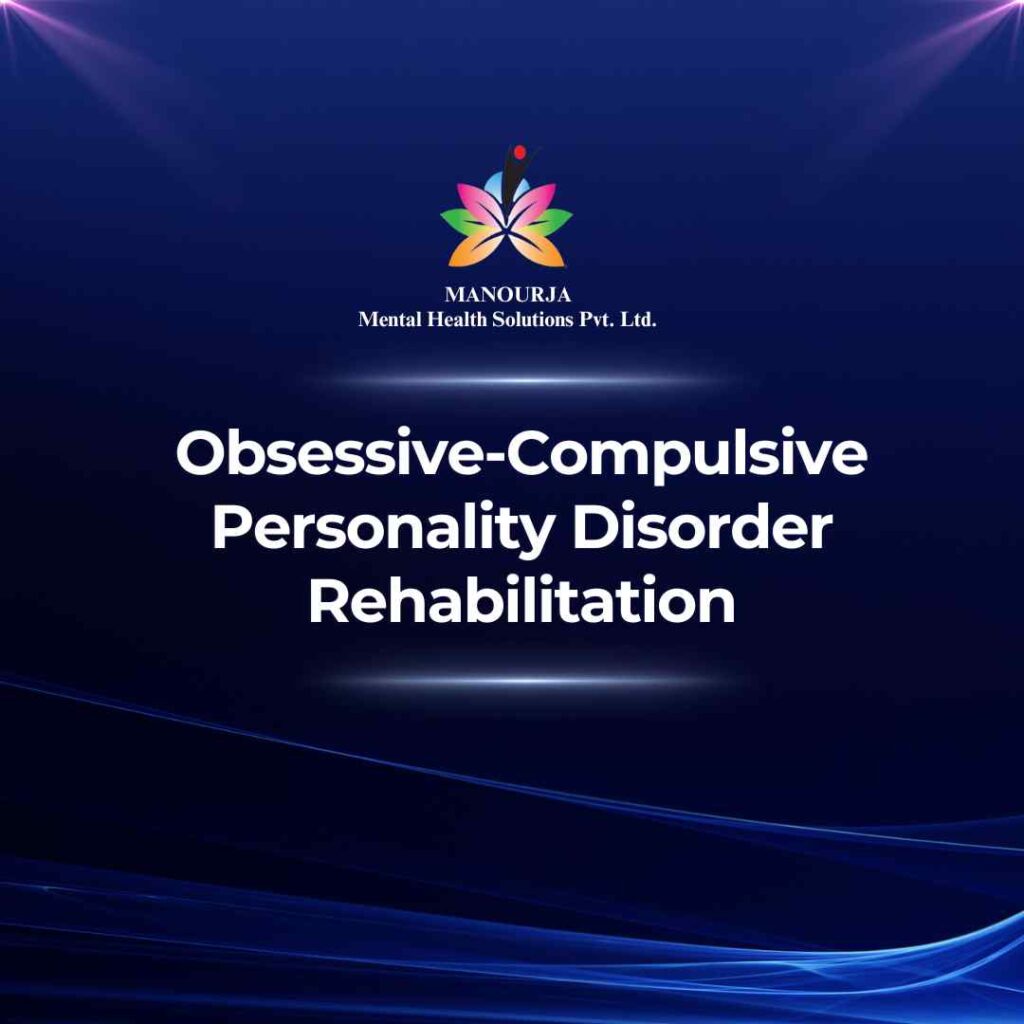Obsessive-Compulsive Personality Disorder Rehabilitation

Obsessive-Compulsive Personality Disorder (OCPD) is characterized by a chronic preoccupation with rules, orderliness, and control. Unlike Obsessive-Compulsive Disorder (OCD), which involves unwanted repetitive thoughts and behaviors, OCPD involves a pervasive pattern of preoccupation with perfectionism, control, and orderliness at the expense of flexibility, openness, and efficiency. Understanding the signs and symptoms can help determine the need for appropriate psychosocial intervention.
Signs and Symptoms of Obsessive-Compulsive Personality Disorder
- Preoccupation with Details, Rules, and Lists: The main focus is on details and rules to the extent that the major point of the activity is lost.
- Perfectionism: Perfectionism that interferes with task completion, as completing a task becomes impossible due to the overly strict standards.
- Excessive Devotion to Work and Productivity: At the expense of leisure activities and friendships.
- Over-conscientiousness and Inflexibility About Morality and Ethics: Strong adherence to ethics and unwillingness to adjust these beliefs.
- Inability to Discard Worn-Out or Worthless Items: Even when they have no sentimental value.
- Reluctance to Delegate: Tasks or to work with others unless they submit to exactly his or her way of doing things.
- Miserliness: Miserly spending style toward both self and others; money is viewed as something to be hoarded for future catastrophes.
- Rigidity and Stubbornness: Difficulty expressing affection; their relationships are often formal and serious.
Indicators for Outpatient Psychosocial Rehabilitation (OPD)
- Individuals with OCPD who are able to maintain basic functional abilities but may struggle with interpersonal relationships and stress management.
- Those who have stable support systems that can support ongoing outpatient treatment.
- Individuals demonstrating insight into their condition and a willingness to engage in therapy.
Indicators for Inpatient Psychosocial Rehabilitation (IPD)
- Severe cases where OCPD traits significantly impair professional and personal life.
- Co-occurring mental health issues such as depression or anxiety that are severe and require intensive, structured treatment.
- Cases where outpatient therapy has not been effective, and more rigorous intervention is needed to prevent further deterioration.
Factors Influencing the Decision
- Severity of symptoms and their impact on the individual’s daily life.
- Presence of comorbid conditions.
- Effectiveness of previous outpatient interventions.
- Availability of support systems.
How Psychosocial Rehabilitation Aids in Treating OCPD
Psychosocial rehabilitation helps individuals understand and modify their patterns of behavior, increase flexibility, improve interpersonal relationships, and manage stress more effectively.
Specific Techniques and Approaches at MANOURJA
- Cognitive Behavioral Therapy (CBT): Helps individuals recognize and change problematic behaviors and thoughts that dictate their need for control and perfection.
- Group Therapy: Provides a platform for learning and practicing new skills, offering feedback from peers, and increasing social support.
- Mindfulness Training: Teaches individuals to be present in the moment, which helps reduce the compulsion to engage in rigid and controlling behaviors.
- Skills Training: Focuses on improving interpersonal skills, stress management, and conflict resolution.
Steps in Psychosocial Rehabilitation at MANOURJA
- Initial Assessment: Comprehensive evaluation to determine the extent of the disorder’s impact on functioning.
- Development of a Personalized Treatment Plan: Tailored to address specific needs such as improving flexibility, reducing perfectionism, and enhancing social skills.
- Implementation of Therapeutic Interventions: Scheduled sessions including individual therapy, group therapy, and skills workshops.
- Ongoing Evaluation and Adjustment: Regularly assessing progress and making necessary adjustments to the treatment strategy.
- Transition to Community Living: Assisting in applying learned skills to real-life settings, facilitating a gradual return to everyday activities.
“Flexibility is the path to freedom from rigidity.”
